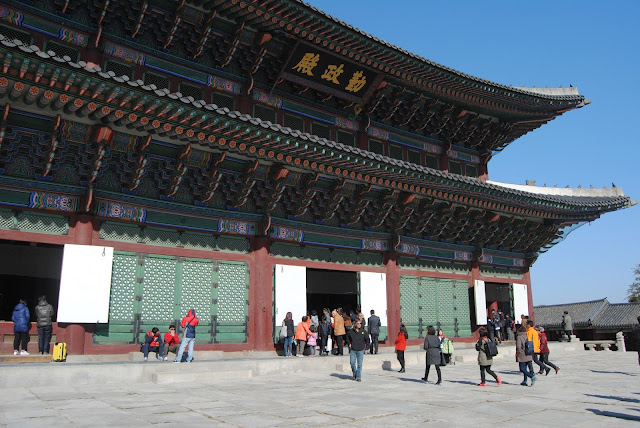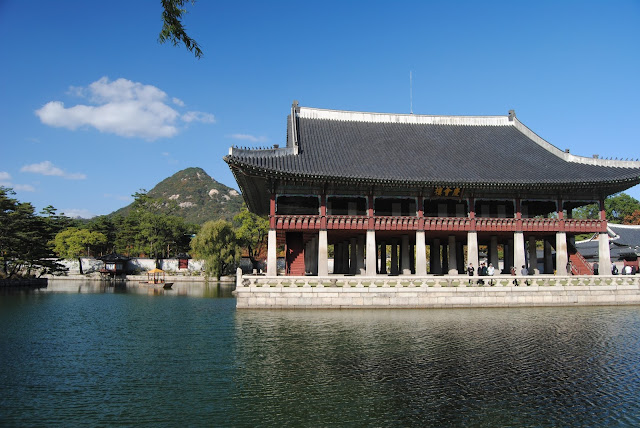Seoul - Gyeongbokgung (Palace)
This was my second time to Gyeongbokgung (경복궁), or Gyeongbok Palace. It's one of the top tourist sites in Seoul, and was the main royal palace of the Joseon dynasty. As for almost all the temples and palaces in Korea, Gyeongbokgung was also deliberately destroyed during the Japanese occupation from 1910-1945. It has since been fully restored.
Pictured above and below is the south and main gate to the palace, called Gwanghwamun (광화문).
The weather was gorgeous. There wasn't a cloud in the sky, and we happened to arrive just as the changing of guards ceremony was happening.
After passing through the 1st gate at the south side, you reach this second, inner gate (pictured below), called Heungnyemun (흥례문).
The last gate before reaching the throne hall is the third, inner gate, called Geunjeongmun (근정문).
Finally, inside the 3 gates and a giant courtyard, is the throne hall, called Geunjeongjeon (근정전).
The rest of the palace grounds are covered in beautifully constructed and painted pavilions, offices, halls and living quarters for the royal family. All are surrounded by scenic courtyards and gardens and are constantly framed by the towering image of Bukhan Mountain in the distance.
The palace has over 500 buildings, consisting of more that 7,700 rooms. After a small admission ticket of 3,000 won, visitors are free to wander the entire grounds.
This small pavilion, sitting in the center of the man-made lake, is called Hyangwonjeong (향원정).
This gorgeous, water-surrounded pavilion is called Gyeonghoeru (경회루). It was used to hold banquets.
Pictured above and below is the south and main gate to the palace, called Gwanghwamun (광화문).
The weather was gorgeous. There wasn't a cloud in the sky, and we happened to arrive just as the changing of guards ceremony was happening.
After passing through the 1st gate at the south side, you reach this second, inner gate (pictured below), called Heungnyemun (흥례문).
The last gate before reaching the throne hall is the third, inner gate, called Geunjeongmun (근정문).
Finally, inside the 3 gates and a giant courtyard, is the throne hall, called Geunjeongjeon (근정전).
The rest of the palace grounds are covered in beautifully constructed and painted pavilions, offices, halls and living quarters for the royal family. All are surrounded by scenic courtyards and gardens and are constantly framed by the towering image of Bukhan Mountain in the distance.
The palace has over 500 buildings, consisting of more that 7,700 rooms. After a small admission ticket of 3,000 won, visitors are free to wander the entire grounds.
This small pavilion, sitting in the center of the man-made lake, is called Hyangwonjeong (향원정).
This gorgeous, water-surrounded pavilion is called Gyeonghoeru (경회루). It was used to hold banquets.














.JPG)
.JPG)
.JPG)
Comments
Post a Comment